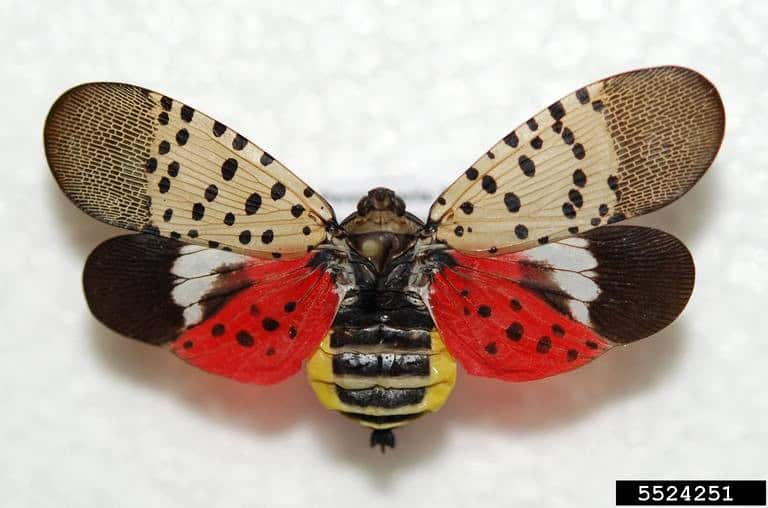New Jersey Department of Agriculture Secretary Douglas H. Fisher has announced that sightings of the spotted lanternfly can be reported by using the form at https://bit.ly/3EBvAwn.
Residents and businesses are encouraged to find resources for treatment options at www.badbug.nj.gov
“We have asked the homeowners of our state to inform us where this insect is and they have done an outstanding job, which has been very helpful in our efforts to fight this invasive pest,” Fisher was quoted as saying in a Sept. 21 press release.
“Using the website form allows us to pinpoint where high populations of this insect are and to prioritize treatment areas by NJDA and USDA staff,” he said.
The department received nearly 10,000 combined emails and calls concerning the spotted lanternfly in August, according to the press release.
While the NJDA and United States Department of Agriculture have about 20 two-person crews throughout the state doing treatments in specific areas, it is not possible to respond to every message or provide treatments at every reported sighting, according to the press release.
The department is also asking that New Jersey residents not contact departments of surrounding states with spotted lanternfly sighting information.
The NJDA continues to encourage residents to stomp on or destroy the spotted lanternfly whenever possible.
Along with the treatment options listed at www.badbug.nj.gov, residents can also use businesses that are licensed pesticide applicators to provide treatments to kill the spotted lanternfly.
However, if residents do choose an over-the-counter treatment option, they must follow the directions on the product when applying it, according to the press release.
This is also the time of the year when adult spotted lanternflies are laying egg masses that can be found on almost any type of surface. A video and information on how to scrape egg masses before they hatch can be found at https://bit.ly/3lGj4Ds
While the adult spotted lanternfly cannot survive the winter, the egg masses hatch in late April or early May, with between 30 to 50 nymphs that go through four stages before reaching adulthood.
While the spotted lanternfly does not harm humans or animals, it can feed on about 70 different types of vegetation or trees. The pest’s preferred host is the Tree of Heaven, an invasive plant that has been in the United States for decades.
The spotted lanternfly is native to Asia and was first found in the United States in Berks County, Pa., in 2014. It is considered a plant hopper and can fly only a few feet at a time. However, the spotted lanternfly is an excellent hitchhiker and can travel on almost any kind of transportation for several miles, which has allowed it to spread to several states, according to the press release.
The department is also asking people to check their vehicles before leaving an area to make sure the pest is not coming along for the ride.
Residents can also send the address of spotted lanternfly sightings to [email protected]

